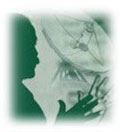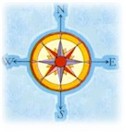|
|
|
Syndicated Features Archive The Toxic Lead Hazard Not long ago, the threat of lead poisoning seemed far removed from the middle class. Scientists believed that lead, a highly toxic mineral, affected only children so poor that hunger drove them to eat lead-laced paint chips peeling from inner-city tenement walls. The neurological problems they suffered - developmental delay, speech disorders, hyperactivity, learning disabilities, coordination deficits, and in severe cases, mental retardation - were undeniably tragic, in fact scandalous, but those who did not live in abject poverty generally felt distant from the problem. No one is exempt from the lead hazard any longer. Swallowing paint chips, it turns out, is a footnote to what scientists now consider a major public health problem at every socioeconomic level. Most lead is ingested in water or inhaled in household dust - quite possibly your water and dust. In recent years, researchers have discovered that extremely low levels of lead - levels once thought to be safe - in fact can cause significant health and emotional problems, especially in young children. Anyone can suffer lead poisoning. The problem is widespread among adults occupationally exposed in the manufacture of batteries, paints, glass, plastics, some fuels, and anything requiring soldering. The Centers for Disease Control and Prevention in Atlanta compiles reports of hazardous lead exposure from the 32 states that require reporting. During the three-month period from October to December 1994, the CDC recorded reports of 3,242 workers exposed to hazardous levels of lead, more than 12,000 a year. The true figure is undoubtedly higher because even in states that require reporting, it is incomplete. But scientific attention has focused primarily on the lead hazard to children, whose developing nervous systems are extremely sensitive to lower-level exposures. The U.S. Public Health Services calls lead the most serious environmental hazard to children. Thanks to bans on lead in gasoline, paints, and cans that hold food, lead exposure has declined, and it's rare today to see children suffering obvious lead poisoning. But as exposure levels have declined, scientists have learned that lead causes significant neurological damage at much lower levels than they previously believed. In 1969, researchers believed lead's toxic threshold was 60 micrograms per deciliter of blood (g/dl - is the Greek letter "mu"). Today, the accepted figure is 10 g/dl, and Harvard epidemiologist Joel Schwartz, Ph.D., contends that lead might be hazardous at an exposure level of just 2 g/dl. Currently, an estimated 9 percent of preschoolers suffer lead exposure at the 10 g/dl level, some three million kids. They suffer from "silent" lead poisoning. Silent lead poisoning may not be obvious to the untrained observer, but the more scientists learn about it, the louder they shout to reduce lead exposure to as close to zero as possible. Lead was among the earliest recognized neurotoxins. The Greek physician, Dioscorides (A.D. 40-90), wrote: "Lead makes the mind give way." And Benjamin Franklin, a printer at a time when type was made of lead, described classic symptoms of lead poisoning among typesetters. A century ago, Australian epidemiologists linked lead paints to childhood poisoning. Paints containing lead were banned Down Under in 1920, but it took the U.S. almost 60 years to follow suit. Until the 1940s, scientists believed that once lead exposure ceased, the mineral left the body and did no lasting damage. Now they know differently. Lead is stored in the bones and leaves the body very slowly. Studies show that lead-linked childhood disabilities persist through young adulthood. Lead also crosses the placenta, and each year an estimated 400,000 children are born with elevated levels. The U.S. banned lead from passenger-car gasoline in 1990, but it is still present in farm vehicle fuel, and leaded gasoline continues to be used around the world. Banning lead from gasoline was a step forward, but by itself, it's no solution. Gasoline lead is still very much with us - in our soil and groundwater. A recent soil study showed that most samples taken within a one-mile radius of major highways were contaminated enough to meet the Environmental Protection Agency's definition of a hazardous lead waste site (500 parts per million). When lead-contaminated soil is disturbed, some of the lead becomes airborne, and may be inhaled into nearby lungs. An estimated 40 million U.S. homes have lead in their plumbing systems, particularly homes built before 1930. But newer homes are by no means exempt. Copper pipes may be joined using lead solder, and new sink and tub fixtures may say "lead-free" but still contain the mineral because manufacturer lobbying efforts succeeded in defining "lead-free" as containing up to 8 percent lead. Lead was banned from interior paints in 1978, but it's still allowed in exterior paints. An estimated 75 percent of U.S. housing built before 1980 contain lead paint. Home renovations often send lead dust into the air - and into residents' and neighbors' lungs - unless contractors take special precautions. Few do. Increased incineration of municipal garbage is another new source of airborne lead. An estimated 50,000 tons of lead are discarded each year in garbage. High-temperature incineration, touted as a "clean" answer to overflowing landfills, may release lead dust. The four most important household sources of lead are paints, water, ceramics, and soil. If you're concerned about lead contamination in your home, low-cost home tests are available (see Resources). Serious contamination problems require professional correction. But everyone should take precautions to minimize household lead exposure:
Low-level lead poisoning is a real problem. Industry claims it's overblown, that every American adult was exposed to higher levels than today's children. That may be true, but it's no reason to relax our lead-reduction efforts, especially in an economy increasingly based on brains, not the brawn of previous generations. If we don't step up our lead-removal efforts significantly - and soon - we're in danger of sacrificing a good deal of the country's brain power well into the next century. Our children and their children are counting on us to get the lead out.
Resources: Home lead test kits. Pace Environs, Inc., of Scarborough, Ontario, Canada produces Frandon Lead Alerts Kits, which test surfaces and drinking water. Call 1-800-359-9000. Hybrivet Co. of Framingham, Massachusetts, produces Leadcheck swabs, which can be used to test painted surfaces, ceramics, crystal, soil, and dust. 1-800-262-LEAD. "Get the Lead Out," is a 54-page handbook about lead poisoning and prevention produced by the New York Public Interest Research Group. Send $7.00 to NYPIRG Publications, 9 Murray St., 3rd Floor, New York, NY 10007-2272. The Alliance to End Childhood Lead Poisoning. A national clearinghouse for lead information. Publishes a variety of materials for home and community lead-removal programs. Write: 600 Pennsylvania Ave., S.E., Suite 100, Washington, D.C. 20003. Michael Castleman is the author of a dozen books on health related issues, including Nature's Cures and Before You Call The Doctor. In addition, he has written for newspapers and magazines such as The New York Times, The San Francisco Chronicle and Examiner, The Nation, Sierra, Redbook, Self, and others. He has taught health and medical writing as an adjunct professor in the Graduate School of Journalism at the University of California at Berkeley.
Site Directory | EcoIQ Magazine Archive | Link Center © Copyright 1997-2018 EcoIQ
|











